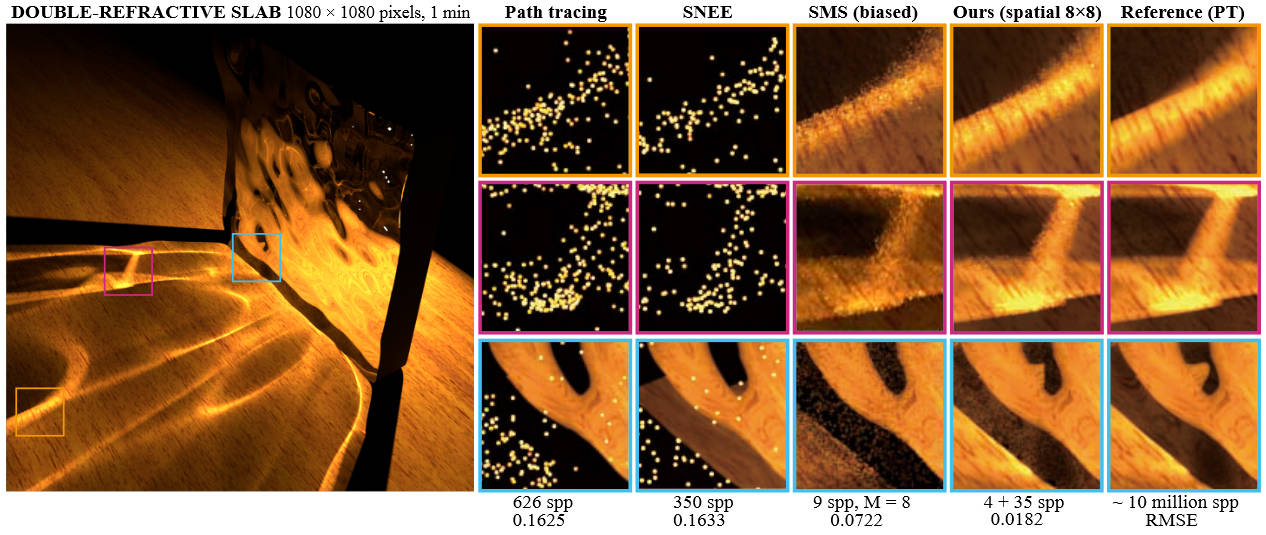Efficient Caustics Rendering via Spatial and Temporal Path Reuse
Abstract
Caustics are complex optical effects caused by the light being concentrated in a small area due to reflection or refraction on surfaces with low roughness, typically under a sharp light source. Rendering caustic effects is challenging for Monte Carlo-based approaches, due to the difficulties of sampling the specular paths. One effective solution is using the specular manifold to locate these valid specular paths. Unfortunately, it needs many iterations to find these paths, leading to a long rendering time. To address this issue, our key insight is that the specular paths tend to be similar for neighboring shading points. To this end, we propose to reuse the specular paths spatially. More specifically, we generate some specular path samples with a low sample rate and then reuse these specular path samples as the initialization for specular manifold walk among neighboring shading points. In this way, much fewer specular path-searching iterations are performed, due to the efficient initialization close to the final solution. Furthermore, this reuse strategy can be extended for dynamic scenes in a temporal manner, such as light moving or specular geometry deformation. Our method outperforms current state-of-the-art methods and can handle multiple bounces of light and various scenes.
Downloads
Paper (37MB) Slides (PPT, 24MB) Supplemental video (629MB)
Supplemental video
Cite
@inproceedings{xu2023efficient,
title={Efficient Caustics Rendering via Spatial and Temporal Path Reuse},
author={Xu, Xiaofeng and Wang, Lu and Wang, Beibei},
booktitle={Computer Graphics Forum},
pages={e14975},
year={2023},
organization={Wiley Online Library}
}
Copyright Disclaimer
© The Author(s). This is the author’s version of the work. It is posted here for your personal use. Not for redistribution. The definitive version of record is available at DOI.
